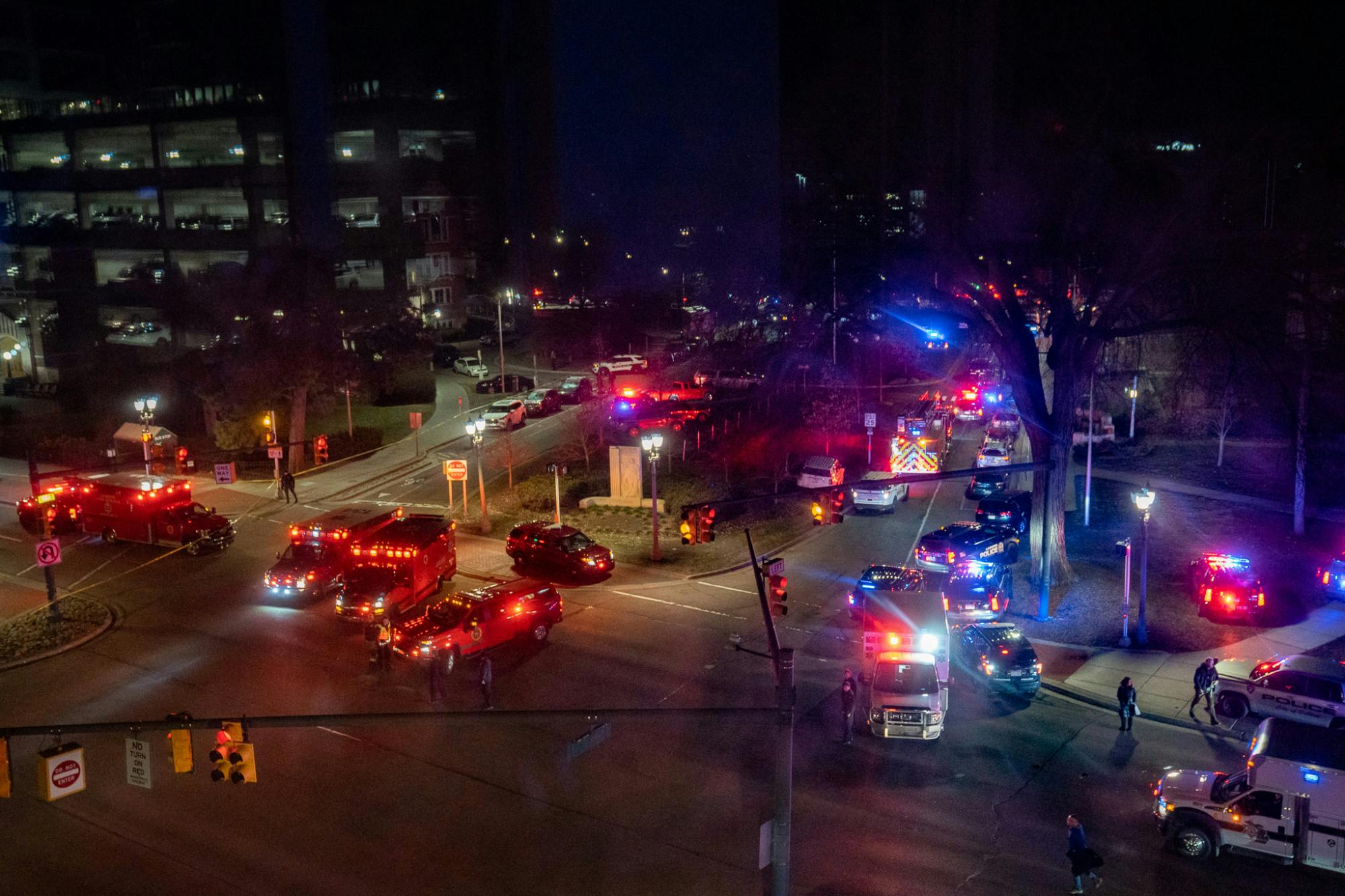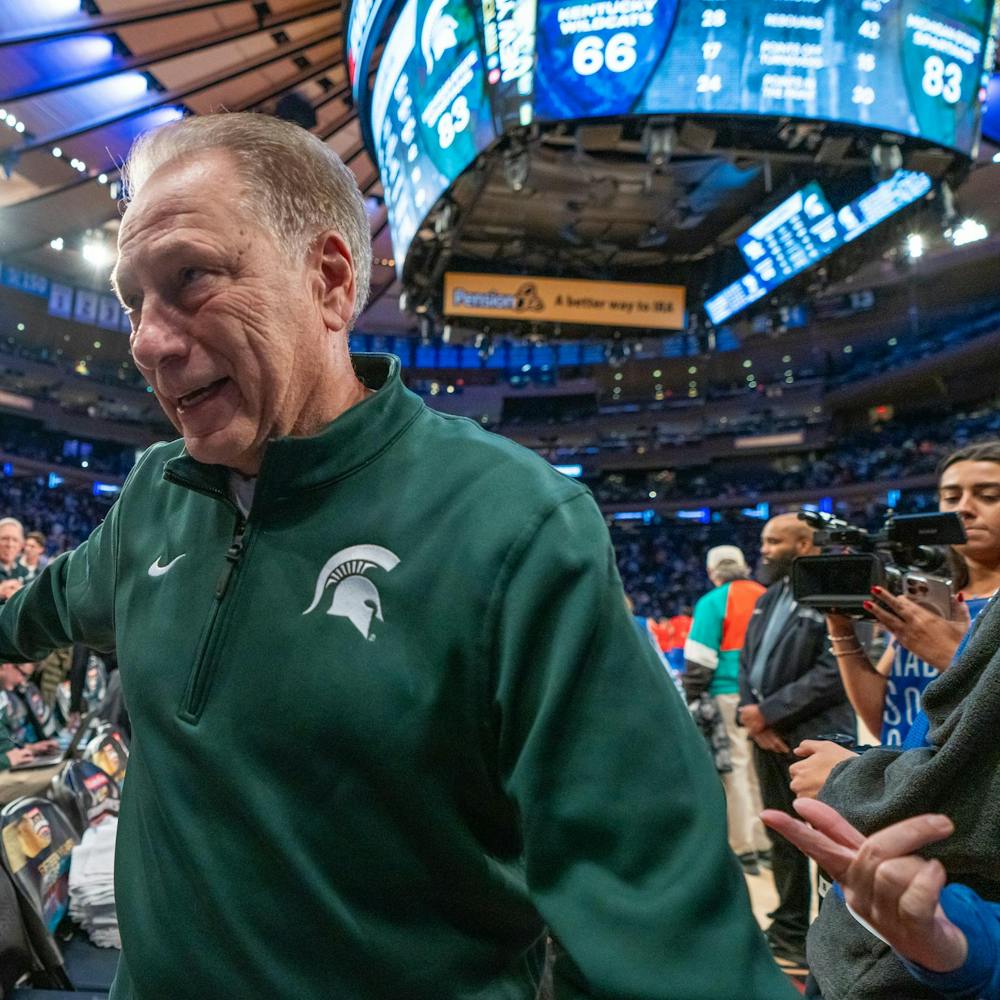“This report is a critical next step in our ongoing commitment to ensuring MSU is a safe place for all who come to our campus,” Woodruff said in a press release. “It provides concrete recommendations for strengthening campus safety and reinforces our efforts are on the right track.”
The firm that conducted the review, Security Risk and Management Consultants, or SRMC, commended the timely response of MSU police officers, but identified several shortcomings and suggested improvements to MSU’s current protocols.
Many of those suggestions, Vice President for Public Safety and Chief of Police Marlon Lynch said, are already being implemented.
Surveillance
MSUPD began work on its centralized Security Operations Center, or SOC, a centralized command room monitoring and overseeing the response to potential emergencies, before the shooting took place. Lynch said the SOC gives police the ability to monitor cameras and systems in real time, 24/7. The review recommended it be constantly staffed by three to four people.
The review suggested upgrading the software used in the SOC from the current Siemens SiPass to Genetec Synergis, a switch that MSU Deputy Spokesperson Dan Olsen said is already in the works.
Genetec, along with centralizing new security cameras, will support a campus "emergency lockdown function," which locks all doors connected to the system when activated.
While MSU already outlined a plan to add more surveillance cameras to campus, especially in academic buildings and by Green Light phones, the review suggested MSU develop a plan to convert all new cameras to the Genetec platform. All surveillance technology should conform to guidelines and standards set by MSU, according to the report.
It also suggested MSUPD ask local businesses and residents to give them access to their own private cameras, if those cameras “provide views beneficial to MSUPD.”
The review told MSU to consider using artificial intelligence in their video surveillance to “identify abandoned packages, large groups, and high activity in unusual areas at inappropriate times.” MSUPD already selected vendors for AI-based software for the SOC and has dabbled in AI-based policing in the past.
The emergence of AI-based policing on campus has drawn criticism and concerns regarding student privacy. In response to these concerns, however, MSUPD spokesperson Dana Whyte said "MSU Police and Public Safety is committed to upholding our department’s ethical standards in order to be respected and trusted by the community we serve,” in a written statement to The State News in Aug.
Locks
Faculty had raised concerns over a lack of lockable doors to MSU administration five months before the shooting occurred.
Marco Díaz-Muñoz, the assistant professor whose Berkey Hall classroom was first targeted during the shooting, told Bridge Michigan he saw no way to lock his classroom door from the inside. Díaz-Muñoz said he and his students pulled on the handle to prevent the gunman from returning.
Weeks after the shooting, MSU announced it would improve campus security by installing more security cameras and by updating 1,300 classrooms with “an appropriate lock system” by the fall 2023 semester.
SRMC’s review revealed that so far, MSU has updated 63% of classroom locks to “thumb-turn style locks,” a manual locking system that allows staff and students to lock their doors mechanically. The review noted that this does not allow doors to automatically lock if the campus goes into an emergency lockdown, and suggested a “storeroom function” lock that could connect to MSU’s emergency lockdown function.
Lynch told The State News that he’s open to the suggested lock system, but says the current thumb-turn style locks “complete the task” and is used successfully by other institutions.
“At the time, we didn't have a recommendation and wanted to get started on some of the initiatives as soon as possible,” Lynch said.
Support student media!
Please consider donating to The State News and help fund the future of journalism.
Family Assistance Center
During emergencies, MSU designates an area for families to connect and for MSU to deliver death notifications. The review said that this space, called the Family Assistance Center, “was without the appropriate leadership and organization necessary” to manage the Feb. 13 shooting.
It recommended staffing the center with security to ensure only authorized people can enter the space, and to provide transportation to the center if it would be dangerous to travel there without it. The review noted that MSU did provide busing to the Family Assistance Center during the shooting.
Roles
The report found that some members of the MSU community sought to help out during the shooting but only “added to the chaos.” Lynch said that coordination is important among those that are not typically trained to act in emergencies.
SRMC said the Board of Trustees in particular “became involved in the incident beyond the customary role and expectations of a governance board during an emergency,” and suggested providing training on their role in an emergency or disaster.
Self-dispatched police officers should also first report to MSUPD before entering the scene, to “avoid interagency confusion and public reports of unknown people with guns on and around campus,” the report said. Lynch said there was a “staging area” where officers not affiliated with MSUPD would first convene and coordinate before responding to an emergency.
Communication
The review found a lack of consistent communication during the shooting. Lynch said the university communicated with students during the shooting about eight times, roughly every half an hour. He said that in the future, that time gap should maybe be decreased to every 15 minutes.
The review also identified “a lack of command and control” when directing firefighters, EMS and the press to areas where they waited to be deployed or were given press updates.
Olsen said that such an area was created for press at 10 p.m. that night.
“We did designate the station area … where we had press briefings on the hour, so I'm not sure exactly what they're alluding to in that specific recommendation," Olsen said.
More officers
The review suggested MSU continue to hire police officers “to reach the authorized level of 75 total officers.” Olsen said the department currently has around 60-64 officers.
“This is important to assure that MSU Department of Public Safety uniformed Patrol Operations are sufficiently staffed to handle routine, and priority calls for service,” the report said.
Lynch said that they’ll start implementing what they can immediately, while other recommendations might involve longer discussions with MSU’s administration.
“We know that there are governance structures in place,” Lynch said. “Some of the recommendations impact university policy as well. So, those are things that we have to include university governance in as well.”
Woodruff reiterated the value of emergency response to the shooting and its long-term impact on the community.
“SRMC highlights equally the complexities of such a tragic event on our campus along with the incredible dedication and response by our first responders and staff,” Woodruff said. “I want to again thank each and every one of them for their swift action and care in the immediate hours following the violence and their ongoing support in the weeks and months that have followed. At the same time, we continue to keep in our hearts the students we lost that night, those injured, the families, and members of our community who were impacted.”
Discussion
Share and discuss “Review of MSU’s response to campus shooting calls for more communication, officers ” on social media.






